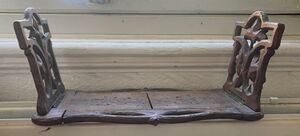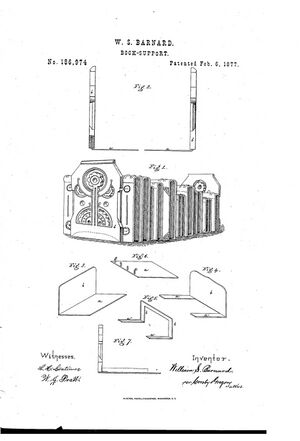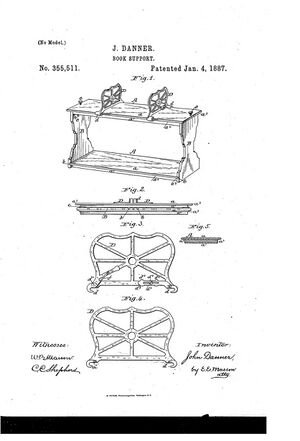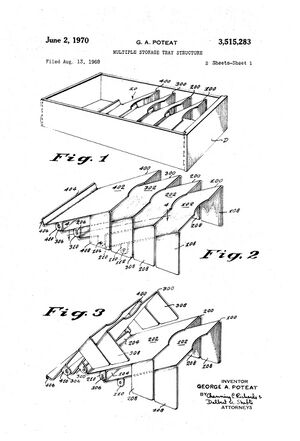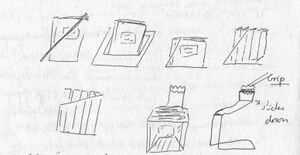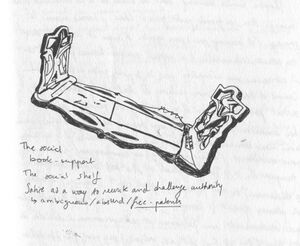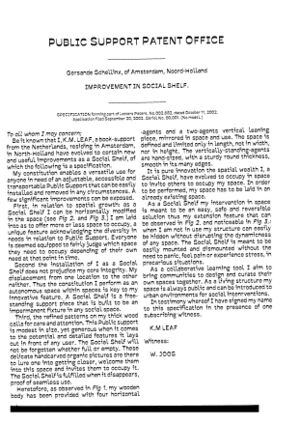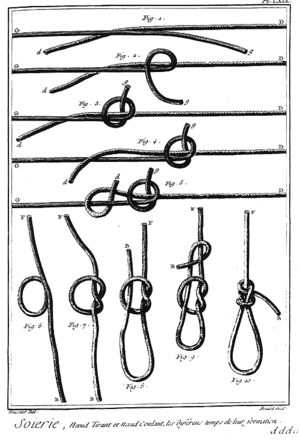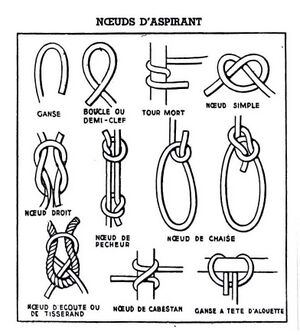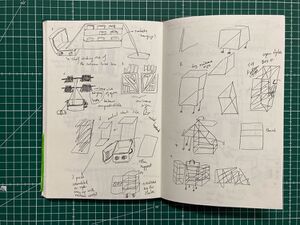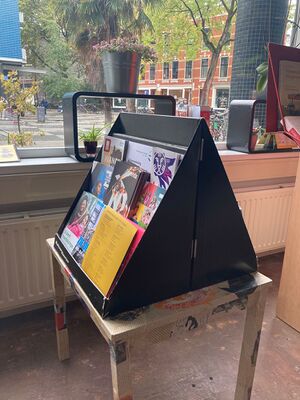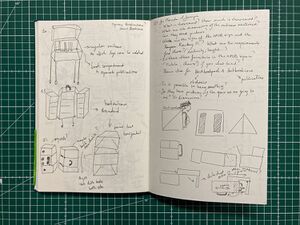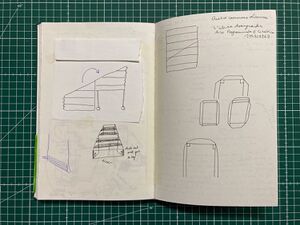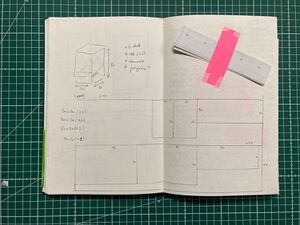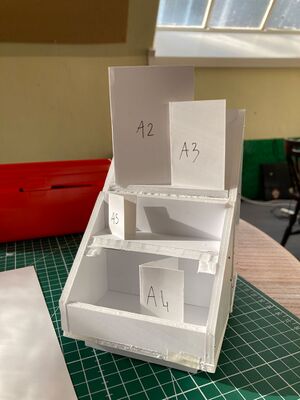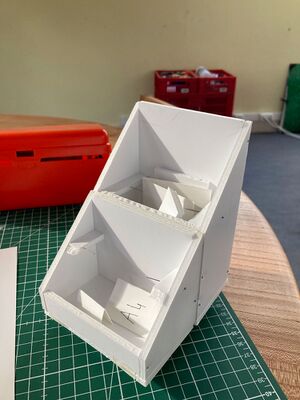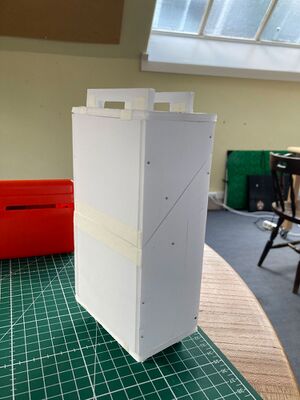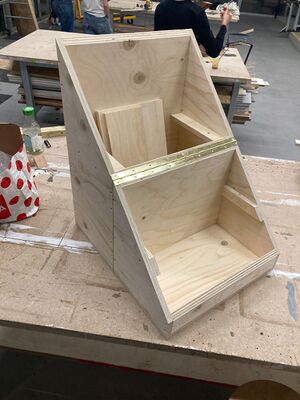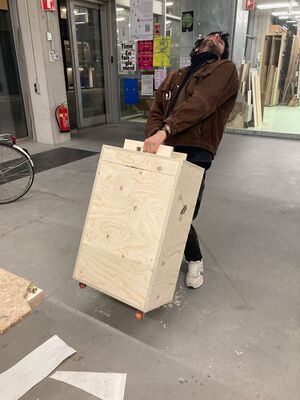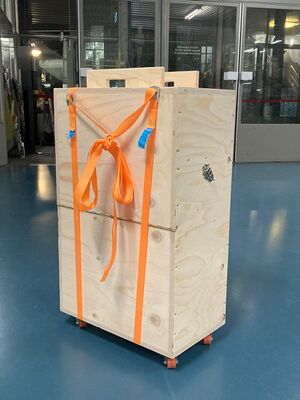Gersande Hackpact: Difference between revisions
| Line 236: | Line 236: | ||
[[File:WIP 1.jpg|frameless]] | [[File:WIP 1.jpg|frameless]] | ||
[[File:WIP 2.jpg|frameless]] | [[File:WIP 2.jpg|frameless]] | ||
<br> | |||
[[File:Social Shelf -1.1.jpg|frameless]] | [[File:Social Shelf -1.1.jpg|frameless]] | ||
[[File:Social Shelf -1.2.jpg|frameless]] | [[File:Social Shelf -1.2.jpg|frameless]] | ||
Revision as of 23:21, 2 November 2022
First notes
21.9.2022
Research role as a facilitator, editor & curator towards PUBLISHING WITH EMPATHY without falling into saviorism
Experiment with different collaborative configuration
Explore publication as performative acts rather than finished product, one where the user/public has agency over the work > universal interface to custom through interaction
Try to break down traditional publishing infrastructures > what are those traditional publishing infrastructures?
Practice as a form of discourse > critique and analysis
Research material practice along role as facilitator/curator in order to research way of PUBLISHING WITH EMPATHY
Step out of standardisation > the abstract and material shelf
Interview with LB
22.9.2022
Interview with Luca
Interviewee GI
Interviewer LUCA
Note-taking EMMA
L: what are you doing at the moment? currently working on a project
G: I’m picking up for the graduation project, the writing practice has been ongoing since last year. i see writing for my grad proj
The material aspect, bookbinding workshop, my colleagues have been producing tools to access to make books
It became a social project, to make people together, showing them they can make themselves, to create
pantograph, developing different things, active in the social part not design
I was thinking about producing a shelf
Shelf my mom found, one self-standing shelf, it’s more like a transportable shelf, to travel with books, it’s outstanding, that can keep a collection of books, want to prototype it but that ppl can customised, customed through the interaction
Where do I involve ppl? design, curator part, a lot of layers, design constraints,
What I have it’s not accessible, find a more accessible design
Public or individual use?
Public, I want to make workshop where ppl can reunite and do things together
I’ve been interested in my role of mediator, facilitator and writer, writing down protocols and ethics, always collaboration with ppl that have different needs, I worked in it but never paid attention why it succeeded or failed? never been recorded
L: What’s the difference to public bookshelves that we already have?
G: The abstract of the shelf, similarity with facilitator that show a body of work, a small library, the street ones, unwanted books that get adopted, but I feel more like practically how to make a tool and see how much people can interact with it
L: It’s not about one shelf, but to make it fit everywhere?
G: Yes, I also want to record the process. Do I go to collectives, specific places to ask what is their ideal shelf? create something is needed
Organise workshop with the same tool and end with personalised ones
What’s the idea of shelf? and what books on them?
L: how do you plan how would you need a shelf? how would you mix it with your theoretical research?
G: I tend to be really big, if I have one project/platform focus is good
L: project documentation between your thesis?
G: Shelf research and thesis together, research to find better publishing environment, if you are deep into what you do you do more, compromise, exploration, that it’s not necessary
Because it’s always collaboration towards something, I want to scale it down to a shelf together /human scale
Building level, design, putting it outside? idk
L: thought the shelf as a publication tool? New-stands with a lot of things on? what’s the influence of publishing in your project?
G: for me publishing is beyond the book media or website, the abstract of the shelf has the potential itself, I relate with the shelf as a facilitator, a newspaper can always be revisited, you can change
L: it’s an intra-action, find something that fits so many fit at once.. News-stands, has this already been done?
G: work with traditional media and subvert it. Find old models and redesign them to current needs. No need to create new things all the time. The more conscious approach to thing
L: bigger fear? the killer?
G: insecure to not narrow it down. So many potential leads that it’s hard to choose one, not a final outcome, my work starts when it’s out there. Where people can be active. Bring able to bring that to people, if I have to hold/support it al the time it means I failed a bit. Should be readable by all, see whatever they want in it.
If it doesn’t talk to ppl, I failed. But if it does, whatever the way and the result it’s okay.
L: research topics?
G: this morning the text a lot about materiality (Johanna Drucker). Digital platforms as materials? plain text she sees as performative acts, not as finite products. Many layers, I need a case study to focus on, I love that publishing has become an active field, a lot of theory I read it’s still not something I relate with, there’s room for me to research, I already have a lot of material, literature, my main focus alongside I want to keep in my working experience, just this contact and experience I have with ppl with successes and failures. I want to make my research out of my experience, academic stuff can be a bit out of touch. It lacks a bit of practical sense sometimes.
L: how do you see yourself as the curator defining the size? or you put the curation of this to the user of the shelf?
if the shelf has limits, it’s limited physicality? if you look at public spaces you decide how much can fit and how?
G: I do not see myself as the one in control of the shelf. If I have to produce the shelf for the bb workshop, but bringing it somewhere else, it would be interesting to think about public shelf, outside of the private sphere.
Could also prototype a shelf that can work autonomously if that the way
L: interaction of ppl with the shelf?
G: I find interesting the potential bringing body of work everywhere. I don’t know what could be in it. Im excited to create a platform where ppl can say and think how to use it.
L: you’re the mediator for the possibility for the individualised shelf and put their media on?
G: I’m still unclear here. Could also make a series and give it to ppl and ask for documentation.
Shelf design based on what the person need but not making it but mediate the creation.
Would be nice if every writing stage has a different shelf
L: do you see yourself as an instructor? to be usable as a shelf? you need to instruct them?
G: I haven’t placed myself yet. Just asking ppl to use it?
Im interested in
L: ppl might not make practical shelf that fit or estetically pleasing? maybe they can do it totally differently than what you thought?
G: you can’t have control on it. To be a good facilitator is a lot of planning ahead knowing what could happen.
Giving them materials, that can be assembled.
L: like Ikea but unclear instructions. They can use on their own
G: textual set of instruction and materials and see how they interpret it
L: personal but also business? two
All different leads, potential “shelf-making” need to be written and collected, archived
Notebook Transcripts
24.9.2022
"A circle (?) whose centre was a box", Nothing is Rambling, Helvetia
> circular publishing
Shelf Proposals
"Nomadic" Shelf???
peripatetic > relating to Aristotle, teaching philosophy while walking in the Lyceum
>itinerant
>learning while building together, teaching while collaborating
rover/roamer/itinerant/drifter/ramble/wander
>to wander over or through
>to go from place to place, especially in a regular circuit (as a preacher or a judge)
>to be carried along by currents of water or air, or by the force of circumstances (being dislodged from private shelves to put in public sphere)
tenor = the course of thought that runs through something written or spoken
gist = the main or essential part of a matter
GIST-SHELF
SINGULARSHELF-PUB
PUBLISHELF
SINGULAR SHELF
THATSHELF
ALTERNATIVE SHELF (occur in turn repeatedly)
> as substitute alternative/other/different/possible take turns/occur in turn repeatedly
OG "Nomadic" shelf
> sliding book-ends (adjustable) > best no screws
Make shelf prototypes that can be easily declined, revisited, customised.
The abstract of the shelf as a FACILITATOR
A platform for people to claim space to occupy, curate, make use of a small space in BIG WAYS.
Investigate, infiltrate public spaces?
The shelf in private sphere
The public shelf
>shelves in public spaces: libraries, book stores, newspaper stands, free-book shelves bookshelves on the streets (unwanted books, collections, flyers in public spaces, in community centres/ museums/cinemas/theaters/schools/cafes...
>momentary "shelves" in books fairs/brocante...
> re-imagine those shelves? > provide support
What are the steps?
DESIGN OF THE SHELF > PRODUCTION OF THE SHELF > ASSEMBLING THE SHELF > CURATING THE SHELF > PERFORMING THE SHELF
SHELF INTERVENTION, when do people come in?
bookends by simon and garfunkel
buttress: "A buttress is an architectural structure built against or projecting from a wall which serves to support or reinforce the wall. Buttresses are fairly common on more ancient buildings, as a means of providing support to act against the lateral forces arising out of the roof structures that lack adequate bracing."
"sheetmetal bookend uses the weight of the books standing on its foot to clamp the bookend's tall brace the book's back"
"The word 'bookend' also used to refer to any pair of pair of items which frame and define a significant or noteworthy event or place."
Patent
Discovery
26.9.2022
Discovery of Book Support patents https://patents.google.com/patent/US186974A/en
Our current Book-ends are the Book-support of before.
patent = "a government authority or licence conforming a right or a title for a set period, especially the sole right to exclude other from making, using, or selling an invention" > easily recognisable, obvious
Write satirical patents for bookends/shelf ALTERNATE > social/publishing through material/craft practice lens, like social collaboration all needs to work together or fair all-together > in relation to expected desired outcome
Publisher-run kiosk
Make "technical" description of the OG Shelf, in the spirit of [[1]]? Or more straightforward? On the now.
Sketchs
1.10.2022
First Patent: First Draft
16.10.2022
Introduction of the Social Shelf for the Leeszaal with the first satirical Patent (still WIP)
Social Shelves
First prototype
Suitcase turns into a Book Stand for the Zine Camp 5-6.11.2022.
Sketches
Looking for a format that would fit in a suitcase, be easy to install and flexible enough to host a wide range of publications.
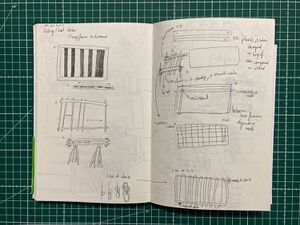
Maquette
Maquette has been reduced to 1/5 of the scale of the Shelf.
Social Shelf #1
Produced between the 27.10.2022 and the 1.11.2022.
Project Proposal
First Draft
29.9.2022
Project proposal brainstorm
1 What do you want to make?
2 How do you plan to make it?
3 What is your timetable?
4 Why do you want to make it?
5 Who can help you and how?
6 Relation to previous practice
7 Relation to a larger context
8 References/bibliography
1 I’d like to work on a series of book-supports and fictional patents narrating the social and material structures of those book-supports. This would lead to a series of social interventions and workshops, in which public or private participants would be invited and involved in some stages of the book-supports’ coming to perform with others.
/// I will create a series of narrations of them, describing a shelf as a social structure. Techniques, material and assembling will be adjusted according to the context of the shelf. The patent is used to tell the story of each particular book support. For instance bookshelves on the streets, public private blending. Or publishers identity reflected in shelves at expo's. Create/curate a space for people to occupy. Subverting patent into opening rather than closing off.
2 The first stage of this project would be to research privately the material and theoretical significance of book-supports, followed by their fictional potential. Then, this research will be brought in different public contexts, discussed and finally reflected upon in a final material and writing stage (maybe a book-support handbook or situation with assessments of all the different experiments). Protocol as outcome potentially, open ended.
3 In the first trimester I’d like to focus on my material and theoretical research on my own, trying to figure out what are the entry-points for others to join the research, experience it and, in the best case scenario, benefit from it. After the Christmas break, I will make a series of book-support intervention and/or workshop in which participants will be involved. In the last trimester I’d like to focus on the outcome of this series of interventions and/or workshops, gather informations into a sort of “Book-support Handbook” to assist/guide/encourage further interventions and/or workshops.
4 Fiction is for me a great path to re-imagine social structures and ways of working or being together. Through the material research and relationships made with human-structures and material-structures (working together as “an aim towards something”), I want to explore and investigate with others, ways of working together with more empathy, in circular circuits rather than linear ones. The workshop format (1), the craft methodologies/requirements and co-working/co-thinking environment, are fertile grounds for research around alternative or fluctuating publishing ways of being, take the authority out of the hierarchy and put it into site-specific community.
/// empowering for people to build and not be tied to 'the proper way', reclaiming spaces, making public spaces welcoming. Relation to guerilla gardening, graffiti, guerilla crochet and knitting, publishing as survival, circulating work without gatekeepers or absurd thresholds like galleries or bookshops.
6 My work is a crossover between curating and facilitating other’s work within my professional practice (workshop technician/educator (2), bookbinder, editor…) and my personal practice, that is always nested within collaborative publishing platforms (books, theatre, radio, workshops, …). The investigation and prototyping of publications as a context within which the “public” has agency, evolves and extends the publication has been a main interest in my work, each publishing stage seen as a moment of craft, from the conceptualisation stage, to the designing one, production to “publication” stage, that is not seen as an end, but an ongoing process, where one leave the agency to a new set of people. The past year I’ve been very interested in developing my writing practice, trying to more thoroughly trace and record the steps taken together, methods to enable those steps and my role as a facilitator. This “background” work has become an exercise and a work itself, becoming a way to publish in a self-reflective way, offering transparency to the social structures underlaying each project.
7 See 4.
(1) that is very similar to an educational environment where reciprocity is key, the workshop-manager assists and learns, from the workshop-guest, that challenges craft with different kind of material and conceptual needs
(2) as a workshop practitioner, I like to observe how crafts create context, how makers write fiction through objects, tell stories without words.
notes
The "shelf" as a social structure
The social structure of/as the shelf
FICTION OF THE SHELF/BOOKENDS
Publisher-run shelves/bookends/book support
Public interventions of the BOOKENDS > interrupt public spaces by turning them in spaces for the "public" to occupy
C O N T I N U I T Y Reclaim certain structure of knowledge / learning / working / research
Tool workshop > empowerment > distribute agency equally throughout whole publishing process
Second Draft
16.10.2022
1 What do you want to make?
2 How do you plan to make it?
3 What is your timetable?
4 Why do you want to make it?
5 Who can help you and how?
6 Relation to previous practice
7 Relation to a larger context
8 References/bibliography
1 For this year I’d like to focus on a series of work called the Social Shelf, constitutive tools that could physically be referred to as book-supports that are theoretically a way to research and try to make collaborative-learning-tools: performative tools bringing communities to design and curate their own spaces together.
2 & 3In order to make this happen, I aim, in the first trimester to research book-supports as objects and investigate their potential as constitutive tools. After what I will design and produce a few Social Shelf prototypes (with different features, materials, accessibility) and create the Social Shelf fiction with a series of satirical patents narrated from the point of view of each of those Social Shelves in order to describe the shelf as a social structure. At the end of this process, entering the second trimester I’d like to isolate a few Social Shelves and introduce them to the public with a series of social interventions and workshops. In the third trimester, I’d like to gather all the information I have on the Social Shelf, what I have learned from that process, what can be changed or should remain and potentially make a handbook with that information and documentation to encourage others to learn from and further that research.
4 Fiction is for me a great path to re-imagine social infrastructures and ways of working or being together. I want to make use of a non-human perspective to give the tools needed to people to reclaim space in what can be, precarious situations and empower communities. Through the material research and relationships made with human-structures and material-structures. I want to explore and investigate with others, ways of working together with more empathy, in circular circuits rather than linear ones. The workshop format, the craft methodologies/requirements and co-working/co-thinking environment, is a fertile ground for research around alternative or fluctuating publishing ways of being: to take the authority out of the hierarchy and put it into site-specific community.
5 I’d like to stay grounded in this research by taking direct inspiration and embrace continuity in my experience as a bookbinder-workshop manager. My colleagues, Miquel Hervás Goméz and Ott Metusala have always been of great support and inspiration in my pedagogical interests and material research, themselves being very implicated in creating DIY tools through the BB (Bookbinding Workshop) channel and supporting community-publishing-projects in all forms. Altogether we have been exploring channels at the crossings between tools/community/pedagogy/empowerment/publication.
I have been wanting to get deeper in my writing and would appreciate any advice, critique, tips or correspondence in this area, but don’t have an exact idea of who could help me in that regards.
Last year, I sensed at different occasions that Manetta had a lot to share with me on the subject of social performative platforms of work, being investigation or practice. The references given to me last year were very exciting to discover.
In general, I have a hard time knowing specifically who can help me yet, I like to get inputs from very diverse entry-points and unexpected ones. I look forward to introduce the project in the second trimester to people foreign to it.
6 My work is a crossover between curating and facilitating other’s works within my professional practice (workshop technician/educator, bookbinder, editor…) and my personal practice, that is always nested within collaborative publishing platforms (books, theatre, radio, workshops, …).
The investigation and prototyping of publications as a context within which the “public” has agency, evolves and extends the publication, has been a main interest in my work, each publishing stage seen as a moment of craft, from the conceptualisation stage, to the designing one, production to “publication” stage that is not seen as an end, but an ongoing process, where one leaves the agency to a new set of people.
The design of the box in Special Issue 17 last year with Jian Haake is a good simple example of this intention materially: we designed the publication in a “universal” way, each box had been made with the same material, closed with the same stickers and engraved with the same text. But we introduced a feature on the inside that would make the box personal through its interaction with the public: the box’s modular shape enabled each and every one to open the box as they wished, once on the inside a set of new stickers with different shapes were given for people to close their box again in their desired fashion.
The past year I’ve been very interested in developing my writing practice, trying to more thoroughly trace and record the steps taken together, methods to enable those steps and my role as a facilitator. This “background” work has become an exercise and a work itself, becoming a way to publish in a self-reflective way, offering transparency to the social structures underlaying each project.
Good examples of this progress are the different textual material I have produced from one issue to the other, evolving from [in Issue 16], becoming a [voice in Special Issue 17] to become a [critical voice in Special Issue 18], trying each time to be an empathetical yet pro-active portrait of work stages to help the group grow and let go.
In April/May 2022, for a project called [Headquarters], I was commissioned to write a text that would perform female and queer labor in workshops and environment, and tried to explore those newly acquired writing methods to explore a non-human voice in a modular structured prosaic text.
Last month, in September, I presented at an [[2]] in collaboration with Mariana Jurado and Carmen Gray in Amsterdam a work called the “Office Rules”, a growing rewritten transcript of all our meetings towards the exhibition as a fictional guideline to the space and story we had put together, that had become a sort of guideline into how to successfully fail to work together. To temper with existing materials and grow beyond it, explore its potential, transcend its reality is for me an exciting resource I want to bring to others.
7 See 4.
8
The exhibitions in which I have taken part the past year with the XPUB, the Headquarters at puntWG led by Olga Micińska or with the Office for Small Decision Making at Plan B have been very inspiring and led me to this project with arms wide open.
The series of tool workshop we have been doing for a couple of years now with the Bookbinding Workshop at the Rietveld is one of my biggest reference in the pedagogical and social matter of this platform.
Recently I have come across book-support patents from the 19th century which I found very inspiring in the sort of romantic yet excessively administrative rhetoric they contain. This motivated me to write satirical patents, in an ambiguous fashion.
I have found a lot of inspiration in publications around the matter of publishing or of fiction as a way to transcend social dead-ends. Some of my latest readings:
Third Draft
2.11.2022
1 What do you want to make?
2 How do you plan to make it?
3 What is your timetable?
4 Why do you want to make it?
5 Who can help you and how?
6 Relation to previous practice
7 Relation to a larger context
8 References/bibliography
1 For this year I’d like to focus on a project called the Social Shelf, constitutive tools that could physically be referred to as book-supports that are theoretically a way to research and try to make collaborative-learning-tools: performative tools bringing communities to design and curate their own spaces together.
Those objects are called Social Shelf, and not Book Shelves, for they are not meant as spaces for books only. The conception of a Social Shelf takes different steps:
i. Design of the Social Shelf: What is the shelf made of? How does it open? How does it look like?
ii. Production of the Social Shelf: Where is the shelf being made? How long does it take? What kind of equipment does it take? What kind of skills does it require?
iii. Assembling of the Social Shelf: How is the shelf put together? When does it have to be assembled? Can the shelf be taken apart again? Is the shelf ready-made or assembled on the place of display? Does it require one or more person?
iv. Curation of the Social Shelf: Where is the shelf placed? How is the shelf placed? Who places the shelf? Why is the shelf placed there?
v. Performance of the Social Shelf: The agency of the other on the shelf once it has been put somewhere in some way. How is the shelf being used? Who is using it? Does the other have a say in that display? Does the interaction with the shelf changes that display? [ see the Zine Camp_SocialShelf#1 ]
The goal would be to make five different Social Shelves that would enable me to explore this platform at each of those different levels, to have various case studies to explore, study, document and reflect upon. The Social Shelf is an educational proposal meant for people and communities to gain independence, confidence and pride in claiming and creating the spaces they need for themselves. It can be used in different context, with different objects to research different of those making-levels, such as a Book-fair, a workshop environment, to host a street book-swap moment, etc.
In the same spirit as the Autoprogettazione by Enzo Mari, I’d like to gather together the Social Shelf research made this year and make a publication where the designs, plans, notes, as well as critics, reflections and corrections are shared in full transparency, for others to use and further investigate with their own material language, to gain material independence and agency not to be helpless within their own criticality.
During the year this publication will be made at different stages of the process. Those stages and changes will be shared on the same level as the latest one made chronologically.
2 In order to make this happen, I aim, in the first trimester to research book-supports as objects and investigate their potential as constitutive tools.
After what I will design and produce a few Social Shelf prototypes (with different features, materials, accessibility) and create the Social Shelf fiction with a series of satirical patents narrated from the point of view of each of those Social Shelves in order to describe the shelves in relation to their social reality.
At the end of this process, I’d like to isolate a few Social Shelves and introduce them to the public with a series of social interventions and workshops. After this public occurrences, I wish to right a technical note, as a critical take on how the Shelves were used/made/performed, after which their designs might be changed on paper, accompanied by additional information.
Finally, I’d like to gather all the information I have on the Social Shelf, what I have learned from that process, what can be changed or should remain and potentially make a handbook with that information and documentation to encourage others to learn from and further that research.
3 September
- Research what is a book-support, book-supports made in different materials and with different techniques.
Take notes and make sketches of different book-supports to make to research in different contexts.
October
- Write patent for the Original Social Shelf.
- Present the Social Shelf project at the Leeszaal.
- Make first Social Shelf Prototype for Zine Camp. Start documenting process, review process, take notes of the interaction with Other when the shelf is being performed. Write patent for first Social Shelf Prototype and update the design after material observations made. Make technical sheet for the Zine Camp Social Shelf.
November/December
- Continue patents and documentation of Social Shelves.
- Create second Social Shelf Prototype for the BB Workshop.
- Make designs and maquette for other potential Social Shelves.
- Try to bring BB Shelf to the Other, documents first encounter with other.
- Continue design and maquette for other potential Social Shelves.
January
- Gather research and documentation first trimester to make a first handbook proposal (with designs, patents, technical sheets with reviews for the two existing social shelves).
- Make third Social Shelf proposal, bring it to the other with public appearance.
February/March
- Bring third social shelf to public appearance.
- Create fourth Social Shelf Prototype.
- Update handbook proposal with third and fourth Social Shelf proposal. Update handbook with latest observations. Maybe re-visit previous prototypes with latest updates and observations.
April/May
- Make fifth and final Social Shelf proposal, bring it to public appearance.
- Last update handbook proposal with all documentation.
- Assess if last public appearance needed with updates made on Social Shelves, or bring handbook to different public.
June
- Make final changes handbook, gather material research. Graduation presentation.
4 Fiction is for me a great path to re-imagine social infrastructures and ways of working or being together. I’d like to convene a space for non-linear education in which I am not at the centre of the class as initiator, but the materiality is. To try and make use of a non-human perspective (that of the material, of the tool) in order to let people reclaim space and agency: to take the authority out of the hierarchy and put it into site-specific community.
Through the material research and relationships made with human-structures and material-structures, I want to explore and investigate with others, ways of working together with more empathy, in circular circuits rather than linear ones. The workshop format, the craft methodologies/requirements and co-working/co-thinking environment, is a fertile ground for research around alternative or fluctuating publishing ways of being: I believe those methods are key to re-inventing social infrastructures in which one can step away from individual isolation and helplessness to step into collective learning and shaping in relation to each an everyone’s own direct surroundings.
5 I’d like to stay grounded in this research by taking direct inspiration and embrace continuity in my experience as a bookbinder-workshop manager. My colleagues, Miquel Hervás Goméz and Ott Metusala have always been of great support and inspiration in my pedagogical interests and material research, themselves being very implicated in creating DIY tools through the BB (Bookbinding Workshop) channel and supporting community-publishing-projects in all forms. Altogether we have been exploring channels at the crossings between tools/community/pedagogy/empowerment/publication.
Jospeh has given me a lot of input in relation to patents, open-source designs and related texts and works.
Last year, I sensed at different occasions that Manetta had a lot to share with me on the subject of social performative platforms of work, being investigation or practice. The references given to me last year were very exciting to discover.
In general, I have a hard time knowing specifically who can help me yet, I like to get inputs from very diverse entry-points and unexpected ones. I look forward to introduce the project in the second trimester to people foreign to it.
6 The work I have done the past years is a crossover between curating and facilitating other’s works within my professional practice (workshop technician/educator, bookbinder, editor…) and my personal practice, that is always nested within collaborative publishing platforms.
The investigation and prototyping of publications as a context within which the “public” has full agency, evolves and extends the publication, has been a main interest in my work, each publishing stage seen as a moment of craft. The “publication” stage included seen an ongoing process where one leaves the agency to a new set of people. The design of the box in Special Issue 17 last year with Jian Haake is a good simple example of this intention materially: we designed the publication in a “universal” way, but introduced a feature on the inside that would make the box personal through its interaction with the public.
The past year I’ve been very interested in developing my writing practice, trying to more thoroughly trace and record the steps taken together, methods to enable those steps and my role as a facilitator. This “background” work has become an exercise and a work itself, becoming a way to publish in a self-reflective way, offering transparency to the social structures underlaying each project.
In April/May 2022, for a project called The Headquarters, I was commissioned to write a text that would perform female and queer labor in workshops and environment, and tried to explore those newly acquired writing methods to explore a non-human voice in a modular structured prosaic text.
Last month, in September, I presented at an exhibition in collaboration with Mariana Jurado and Carmen Gray in Amsterdam a work called the “Office Rules”, a growing rewritten transcript of all our meetings towards the exhibition as a fictional guideline to the space and story we had put together, that had become a sort of guideline into how to successfully fail to work together.
7 Recently I have been introduced to Enzo Mari’s work and have found a lot of inspiration in the open source designs he made and published Autoprogettazione?. Looking into his work I encounter a great desire to motivate people to think with their hands, the material reality of the infrastructures one has around them. Seeing the material process as valuable mainly through educational points rather than aesthetic once.
Johanna Drucker’s performative materiality exposed in DHQ: Digital Humanities Quarterly Vol.7 is something that resonates immensely with working intentions and the aspiration to work on ongoing processes rather than what one could call fixed outcome. This performative materiality is a key concept in my research, I do not want to be at the subject of my research, I am the instrument of the research.
The concept of communities of practice is something I am interested to further investigate in terms of organisations, in order to investigate models that can innovate and solve problems as mentioned by Etienne and Beverly Wenger-Trayner in Introduction to communities of practice, a brief overview of the concept and its uses.
Italo Calvino’s If on a Winter's Night a Traveller, is to me a very beautiful demonstration of fictional displacement pulling the reader as protagonist in an embedded narrative that never fails to remind you of its material and social “reality”. A narrative tool I’d like to explore myself to make very concrete material and methodological proposals.
8
The exhibitions in which I have taken part the past year with the XPUB, the Headquarters at puntWG led by Olga Micińska or with the Office for Small Decision Making at Plan B have been very inspiring and led me to this project with arms wide open.
The series of tool workshop we have been doing for a couple of years now with the Bookbinding Workshop at the Rietveld is one of my biggest reference in the pedagogical and social matter of this platform.
Recently I have come across book-support patents from the 19th century which I found very inspiring in the sort of romantic yet excessively administrative rhetoric they contain. This motivated me to write satirical patents, in an ambiguous fashion.
I have found a lot of inspiration in publications around the matter of publishing or of fiction as a way to transcend social dead-ends. Some of my latest readings:
Annotated Bibliography
Patent
Barnard, W.S (1877) Improvement in Booksupport, United States Patent Office
Danner, J (1887) Book-Support, United States Patent Office
note: The two patents above were a great insight in the language used to describe the Book-support objects and the variations in body and mechanism one can encounter. I aim to use them as reference to make the description of the Social Shelves.
Books
Cras, Sophie (sous la direction de) (2022) Ecrits d'Artistes sur l'Économie, Éditions B42
note:
(ii) Barette, Lucie (2022) Corset de Papier, éditions divergences
note: Critical take on feminine press in France, with a sharp historical and social discourse on the context of its emergence. Leading to an analysis of the consequences nowadays on the collective minds, an influence with quite some political weight. Good essay, on a specific topic, on the body/content relation within social and political context of publishing. What once was a rebellious initiative and a way to go around censorship, can nowadays be a way to reproduce social stigma and keep one in a position of oppression.
(iii) Gilbert, Annette (2016) Publishing as Artistic Practice, Sternberg Press
note: A lot of different works, concepts in relation to Publishing in the art field brought at the forefront of social and academic concerns. One of the first publications gathering as many texts on Publishing on a theoretical level.
(iv) Flusser, Vilém (2002) Petite Philosophie du design [Essai], Éditions Circé
note:
(v) Calvino, Italo (1983) If on a Winter's Night a Traveller, Vintage Classics
note: Exciting multi-layered narration, mixing genres, human and non-human perspectives. Complex yet accessible structure with short chapters keeping the reader on its toes. A book within a book within a book, holding a book held by an author narrated by another author holding another book…
(vi) De Munck, Marlies & Gielen, Pascal (2022) Kwetsbaarheid, Valiz
note: On fragility by Marlies de Munck and Pascal Gielen, has a nice take on touch and be touched, or not touched, as a space that can be one of safety as much as one loneliness, isolation. A good base to think about discomfort, disruption as sometimes necessary to emancipate from fragility, or embrace it, be confident to go ahead. Made a connection to education and learning/teaching processes.
(vii) Klement, Elisabeth & Pappa, Laura (2017) Signals from the Periphery, Estonian Academy of Arts Press
note:
(viii) Mari, Enzo (1974) autoprogettazione?, Edizioni Corraini
note: Great collection of furniture designs made possible with the simplest tool and material set. Accompanied with interviews, notes, discussions and reflections from “users” and the designer self. Very relatable intention from Enzo Mari in the pedagogical value “the end product, although usable, is only important because of its educational value”. A plea for thinking with one’s own hands and anti-consumerism.
(ix) Cramer, Florian & Wesseling, Janneke (2022) Making Matters, A Vocabulary for Collective Arts, Valiz
note: Different takes on collectivity across a diverse body of disciplines with non-western perspectives. Short chapters introducing different ways to being together in art and design, different ways to document or share being together in art and design. Still reading this publication, some chapter talk to me more than others, hard to reflect on it already.
(x) Almqvist, Erik Eje (2022) Hammer & Nail, Pavilion
note: Furniture designs inspired by Enzo Mari. Brief introduction to Enzo Mari and the author’s personal motivations. Then a chapter in which is explained and listed which items one should collect to be able to make what is in the book, as well as how to practice with these tools in order to be able to reproduce safely the designs yourself. Very clear, blueprints and small description of steps and concepts.
(xi) Aalders, Willem (1981) houten speelgoed, voor binnen en buiten zelf maken, Zuidgroep Bv Uitgevers
note: Leeszaal found. Book includes specification of needed tools. Quite accessible set of tools for anyone to collect and be able to make home. I was very inspired by the very straightforward yet elegant design blueprints that are accessible to many to reproduce all the items in the book.
(xii) Goalec, Valérian, (2020) From His Desk, Théophie’s Calot, MER. Paper Kunsthalle, LaSpore
note: Artist book gathering a series of stencils and measuring tools made based on 26 different desks. I like this making of relatable traditional tools on the base of custom values corresponding to one specific environment, illustrating one’s space specific needs.
Articles
Drucker, J (2013) 'Performative Materiality and Theoretical Approaches to Interface' in DHQ: Digital Humanities Quarterly Vol.7, No.1
note: “Performative materiality suggests that what something is has to be understood in terms of what it does, how it works within machinic, systemic, and cultural domains.” I’m very interested in the concept of performative materiality dissected in this text by Johanna Drucker. To look upon an interface “that is meant to expose and support the activity of interpretation, rather than to display finished forms”.
(ii)Wenger-Trayner, Etienne and Beverly (2015) Introduction to communities of practice, a brief overview of the concept and its uses
note: As I’d like to address communities, in a broad sense, this introduction to communities of practice gave me a great insight on what different aspects of said structure I should take into account and which kind of community I’d live to address or convene, especially in terms of organisation: “Communities of practice provide a new approach, which focused on people and on the social structure that enable them to learn with and from each other.”
Bibliography
Patent
(i) Barnard, W.S (1877) Improvement in Booksupport, United States Patent Office
Books
(i) Cras, Sophie (sous la direction de) (2022) Ecrits d'Artistes sur l'Économie, Éditions B42
(ii) Barette, Lucie (2022) Corset de Papier, éditions divergences
(iii) Gilbert, Annette (2016) Publishing as Artistic Practice, Sternberg Press
(iv) Flusser, Vilém (2002) Petite Philosophie du design [Essai], Éditions Circé
(v) Calvino, Italo (1983) If on a Winter's Night a Traveller, Vintage Classics
(vi) De Munck, Marlies & Gielen, Pascal (2022) Kwetsbaarheid, Valiz
(vii) Klement, Elisabeth & Pappa, Laura (2017) Signals from the Periphery, Estonian Academy of Arts Press
Articles
(i) Drucker, J (2013) 'Performative Materiality and Theoretical Approaches to Interface' in DHQ: Digital Humanities Quarterly Vol.7, No.1

